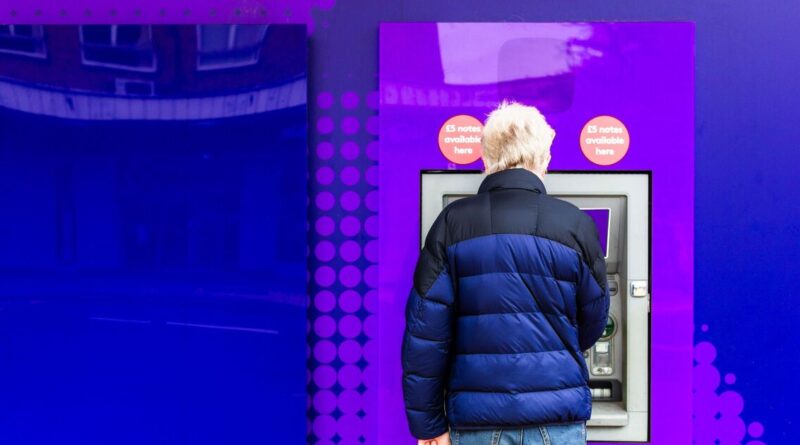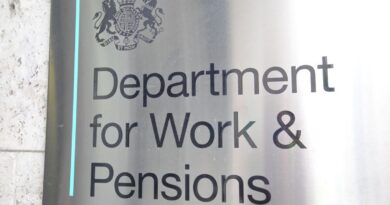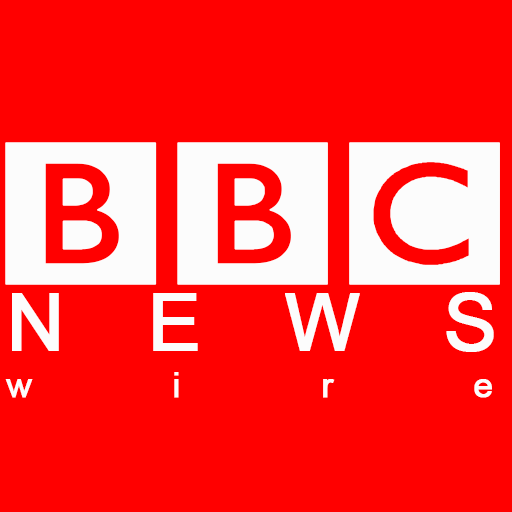State pension ‘higher than expected’ rise confirmed in new figures | Personal Finance | Finance
State Pensioners are poised to receive a larger increase next April than thought earlier this year, as the September inflation rate was confirmed today.
A BBC expert this morning confirmed what people will get – and it’ll be higher than was anticipated. This morning the rate of Consumer Prices Index (CPI) was 3.8% in September, remaining at the same level as both July and August, the Office for National Statistics said.
This rate is also a key part of the pension triple lock, which is used to decide how much pensions will increase by in the following April. But the increase is based on either this inflation rate, average earnings growth between May and July, or 2.5%.
The inflation rate was however lower than the earnings growth figure of 4.8%, meaning that pensions are expected to rise by this level from April next year.
The total was revised earlier this month when the Office for National Statistics (ONS) announced that regular wage growth dropped to 4.7% in the three months to August, down from 4.8% in the previous three months, reaching a fresh low of more than three years.
Nevertheless, Paul Lewis, presenter of Radio 4’s Money Box, stated that the wage growth figure for May-July this year, which is utilised in the triple lock calculations, has been revised upwards – from 4.7% to 4.8%.
And this morning taking to X, Mr Lewis confirmed the rise people will get in April 2026. He said: “A 4.8% rise in the basic old state pension and the standard new state pension means they will rise from 6 April 2026 from £176.45 a week to £184.90 (old SP) and from £230.25 a week to £241.30 (new SP). All other bits SERPS, GRB, deferral, protected amount will rise by 3.8%.”
This means that pensioners will be receiving more than originally expected. He said this adds more than £100 million to the state pension bill.
Those receiving the new full state pension can expect an increase of over £500 per year starting next April. Under the triple lock guarantee, the state pension increases every April in line with whichever is the highest of total earnings growth in the year from May to July of the previous year, CPI (Consumer Prices Index) inflation in September of the previous year, or 2.5%.
Previous data from the ONS indicated that those with wage growth at 4.7% would see a full new state pension increase from its current level of £230.25 per week to £241.05 per week from April.
Those retiring on the basic state pension will see their weekly income rise from £176.45 to £184.75.
However, the new figures indicate that the new state pension would be £241.30 and the basic would be £184.90.
Inflation unexpectedly remained steady last month as upward pressure from petrol prices was offset by easing food costs, according to official figures.
The rate of Consumer Prices Index (CPI) was 3.8% in September, remaining at the same level as both July and August, the Office for National Statistics said.
Economists had predicted a reading of 4% for the month. The weaker-than-expected rise will provide a boost for the Bank of England in its bid to bring inflation back down to its 2% target rate.
The Bank of England had previously predicted that UK inflation would peak around September before steadily falling back down.
The inflation figure will also be welcomed by the Chancellor Rachel Reeves, with it pointing to a smaller-than-expected rise in the cost of living for households and also a weaker-than-expected increase in many welfare payments next year.
Office for National Statistics (ONS) chief economist Grant Fitzner said: “The largest upward drivers came from petrol prices and airfares, where the fall in prices eased in comparison to last year.
“These were offset by lower prices for a range of recreational and cultural purchases including live events.
“The cost of food and non-alcoholic drinks also fell for the first time since May last year.”
The UK’s statistics body said a smaller fall in the price of motor fuel and tickets for flights put upwards pressure on the inflation rate for the month.
But it said prices linked to cultural events dropped by 1.6% month-on-month.
Meanwhile, food and non-alcoholic drink prices also helped contribute to steady inflation after they dipped 0.2% month-on-month, slipping for the first time since May last year.
The ONS indicated that this was likely to have been driven by increased sales and discounting by retailers.
Nevertheless, food and drink prices are still 4.5% higher than the same month last year after a recent acceleration in costs, which many suppliers have linked to higher labour costs and taxes.
September’s inflation rate also means that many state benefits are now expected to rise by 3.8%, providing a smaller-than-predicted increase for the Chancellor ahead of next month’s autumn Budget.
The September inflation rate is typically used to decide the level of increase for many benefits, such as universal credit, tax credits and disability benefits.
This rate is also a key part of the pension triple lock, which is used to decide how much pensions will increase by in the following April.
But the increase is based on either this inflation rate, average earnings growth between May and July, or 2.5%.
The inflation rate was however lower than the earnings growth figure of 4.8%, meaning that pensions are expected to rise by this level from April next year.
The latest reading will also dictate some tax increases for the Chancellor, with business rates – the tax on commercial properties – now expected to rise by 3.8%, before an impending revaluation process is taken into account.
The ONS’s preferred measure of inflation, Consumer Price Index including occupiers housing (CPIH), stayed flat at 4.1% for September, compared with the previous month.
Meanwhile, the Retail Prices Index (RPI) rate of inflation slowed to 4.5% from 4.6% in August.





